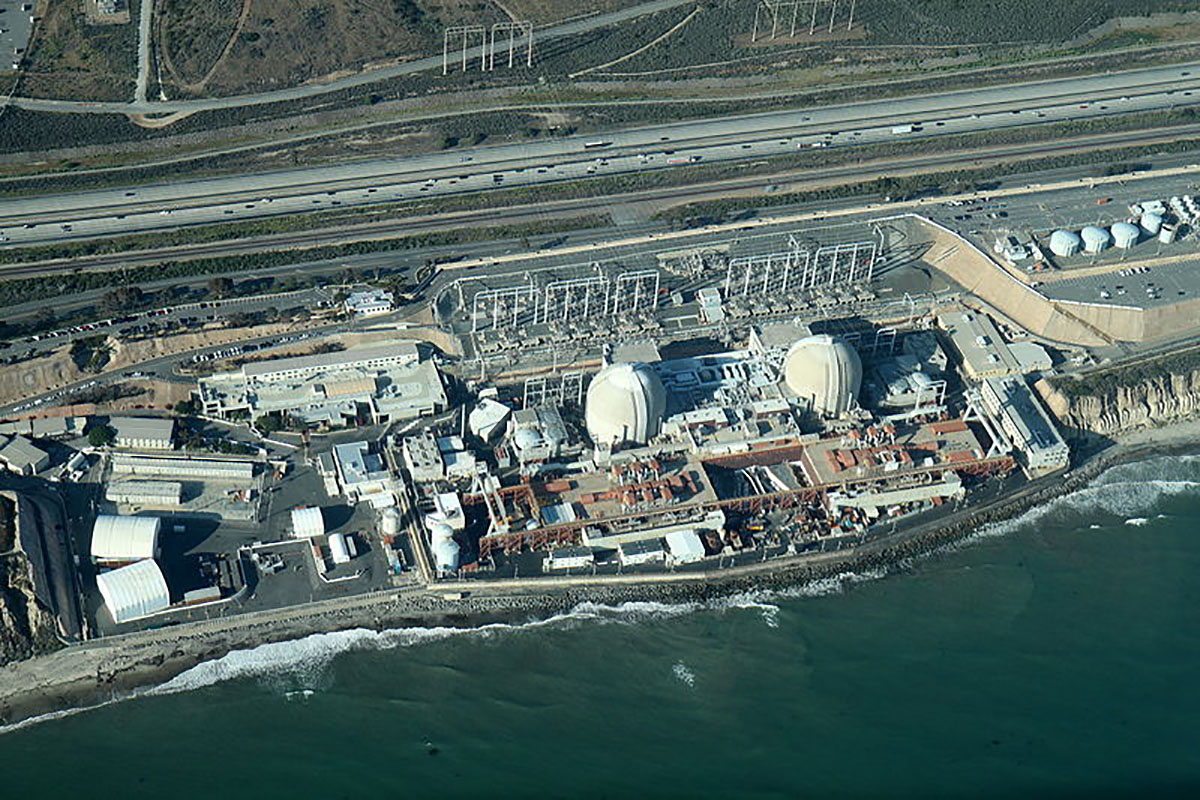Yesterday Southern California Edison ("SCE") announced the resources it selected to replace capacity it received from the San Onofre Nuclear Generating Station (above), a 2,200 MW nuclear facility, and once-through-cooling gas plants subject to retirement under State Water Board regulations. The Sierra Club invested a significant amount of time in the fight over how to replace San Onofre, organizing rallies, petition drives, and conducting intensive advocacy at the California Public Utilities Commission ("CPUC") to make sure that San Onofre was replaced with clean energy and not long term investments in fossil fuel plants.
The resources were solicited through an "all-source" request for offers (RFO), which allows all resources, including gas-fired generation, energy storage, demand response, renewables, and energy efficiency, to bid and compete in the same solicitation. The selected resources were also subject to parameters set by the CPUC, which required that new resources for the West L.A. Basin area be composed of at least 1000 MW of gas-fired generation, at least 600 MW of "preferred resources" (efficiency, demand response, and renewables) and/or energy storage and 300-500 MW of any resource.
What happened? Here is a breakdown of the resources SCE has selected from the RFO and will seek final procurement approval by the CPUC through a formal application:
Energy Efficiency: 130 MW
Demand Response: 75 MW
Renewables (Behind-the-Meter):44 MW
Storage: 261 MW
Gas-Fired Generation: 1,382 MWTotal: 1,892 MW
So, what do we make of this?
The good:
The All-Source RFO: SCE's all-source RFO, the first of its kind in California, allows for competition among a range of potential resource solutions to meet need. The response to SCE's RFO was extremely robust, with over 1,800 proposed offers. SCE's all-source RFO is a step forward in utility procurement practice and stands in stark contrast to SDG&E, the other utility impacted by San Onofre's retirement.
Rather than conduct an all-source RFO to meet 300-600 MW of any resource need authorized to SDG&E by the CPUC following the retirement of San Onfore, SDG&E is seeking CPUC approval of a bilateral contract for all of this capacity with the 600 MW Carlsbad gas plant. Bilateral contracting is a private negotiation that prejudices other potential resource providers who are kept from competing to fill authorized procurement amounts as well as advocates like the Sierra Club seeking optimal outcomes for customers and the environment. The Sierra Club is opposing approval of the Carlsbad contact before the CPUC.
A Precedent-Setting Showing by Energy Storage: The 261 MW of storage procurement is a significant boost for the industry and will result in storage deployment at a more accelerated pace than required under California's recent energy storage procurement decision. SCE's proposed storage procurement is comprised of a range of applications, include a number of "behind the meter" storage application that will shift consumption from high to low demand hours and facilitate increased deployment of rooftop solar. SCE's proposed procurement also includes a 100 MW utility-owned battery storage provided by AES. The 100 MW battery storage project is significantly larger than existing battery-storage projects in the country and raises the bar for the size of storage projects utilities should be considering.
For additional scrutiny:
Did SCE's Proposed Procurement Comply with State Policy Prioritizing Preferred Resources? SCE proposes to meet its 300-500 MW "any resource" authorization entirely with fossil-fuel generation. To comply with state law and a long-standing energy policy called the "Loading Order," SCE must procure all feasibly available and cost effective energy efficiency, demand response, and renewables prior to resorting to fossil fuels. Because they typically have 20-25 year contracts with a utility, new gas plants create long-term commitments to fossil fuels that interfere with California's ability to rapidly decarbonize its energy system.
As SCE moves forward in seeking approval for the resources it selected from its RFO process, the Sierra Club will be scrutinizing SCE's procurement to make sure SCE did not improperly disregard the Loading Order and all feasible and cost-effective clean energy options. Given the number and range of responses to SCE's RFO, one would expect that SCE had plenty of viable carbon-free solutions to choose from in meeting its "any resource" needs.
-- Matt Vespa. Sierra Club Environmental Law Program
